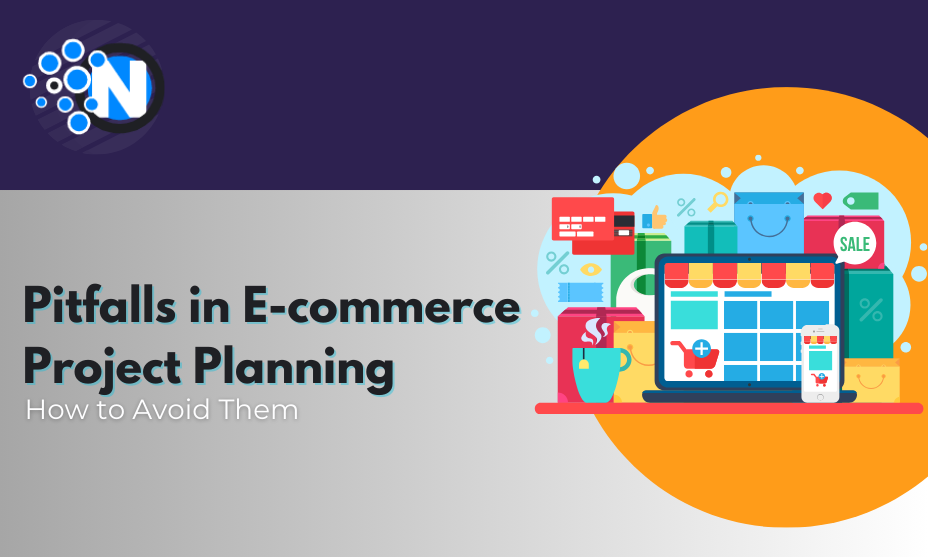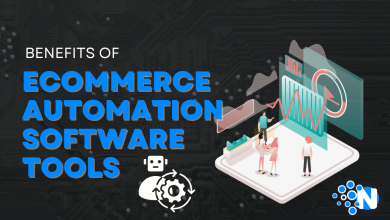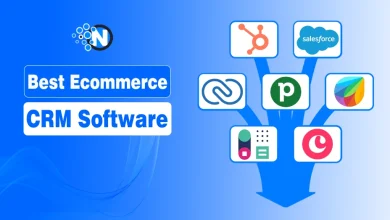7 Common Pitfalls in E-commerce Project Planning and How to Avoid Them

E-commerce has now taken an important role in this business environment, with numerous companies shifted to online sales. Sometimes it is easy to think that opening an e-commerce business is a piece of cake. But actually, when you dig deeper you will realize that the matter is not so simple. When we talk about the whole process, there exists a good number of traps that could potentially derail a project online.
In this article, we will discuss common pitfalls in e-commerce project planning and also outline the ways of their prevention.
Common Pitfalls in E-commerce Project Planning
1. Poor Market Research
Underestimating the fact that an effective project plan is necessary for the success of e-commerce operations is a vital issue affecting many projects. A detailed project plan not only outlines the steps necessary to achieve your goals but also helps in identifying potential risks and roadblocks.
Such absence of project plan can cause the growth of the project projects to deviate from its track, resulting in delayed deliveries, additional expenditures, and vessel that cannot meet the consumers’ expectations.
Time spent building up a plan of action is important to account for market research, technology needs, budgeting, milestones and contingency plan which is meant to promote efficient running of your e-commerce venture.
2. Lack of Clear Objectives and Goals
Being vague can lead to all kinds of problems, one being to deviate from your goals and lose your purpose. Defining the achievement goals, the means of success, and the objectives from the early stages of the work is critical. These tasks should have four main characteristics, namely being specific, measurable, realistic and achievable (SMART). They will act as a map showcasing the journey towards the end goal. Also, it will determine whether you met the project’s objectives.
In order to prevent this mistke; let all staking parties be involved in the process of goal setting and share the goals with all of them in a way that they all are aware of what task is at hand. Constantly revisit your goals and make those adjustments as necessary because you can’t afford to veer off course.
3. Inadequate Budget and Resources
E-commerce being a venture that consumes a lot of time, money, and effort is likewise a project that is quite capital and resource intensive. In many cases, businesses look for cheap solutions of establishing an e-commerce platform, instead of creating a sustainable plan which can bring in revenue and income for years to come. It goes without saying that a realistic budget ought to be developed and allocated regarding the resources to ensure the project’s success and be a part of the e-commerce.
To prevent this problem, you should carry out a very detailed analysis of the costs related to your e-commerce project, expenses for website development, marketing and maintenance of your website.

4. Poor Website Design and User Experience
Your e-commerce website is the face of your business in the digital world. If it is poorly designed and difficult to navigate, you will likely lose potential customers.
Your e-commerce website should be visually appealing, easy to use, and optimized for both desktop and mobile devices.
To avoid this, opt for a professional and mobile responsive website design that aligns with your brand and provides a seamless user experience. Regularly test and optimize your website for usability to ensure it meets the needs of your target audience.
5. Lack of Marketing Strategy
Building an e-commerce website can do only half of the job; you have to create a marketing strategy that can boost your business in the market.
However, there are numerous companies that misguidedly believe that a fantastic product or service will successfully market itself. Hence, if you do not have a clearly defined marketing plan, it may come to pass that your e-commerce endeavor will remain stuck with a low rate of sales or patronage.
Continually track and make data driven conversion to the ineffective tactics that will ensure maximum ROI. Also, look into using influencers as part of your media relations and referral marketing to increase the spread of your messages.
6. Insufficient Customer Service
When it comes to e-commerce, great customer service is the key to success. You will achieve brand loyalty growth and positive reputation when offering your consumers excellent service.
People who browse through and shop at online stores want to get immediate answers, friendly assistance, and a simple return process. Providing the client with the right service is important lest one loses sales and online buzz.
It is, therefore, imperative that you avoid this trap by setting up a customer service section with a live-chat support, deploying your contacts statement prominently and actively dealing with customer questions & any concerns they may have.
Consgroder hiring a platform which will provide customers service training to your team so that they are able to tackle issues which may arise.
7. Ignoring Data Analytics
Data is the strongest battleground in e-commerce world. With the use of data-tracking and analyzing tools, corporations will be able to obtain crucial datasets on customer behavior, sales patterns, to mention a few. Nevertheless, the data metadata is quite often discarded or poorly applied by the projects of e-commerce.
It is advisable to not let yourself be left out in this aspect. Make sure you invest in proper data analytics tools and track your data regularly to identify areas for improvement and opportunities for growth. Use the data to assist your marketing strategy to develop your products and crucial business decisions.
Final Words
Maintaining pace with the trends and continually evolving the business model will be essential ingredients for digital leadership and e-commerce enterprises. The role of data analytics in strengthening the e-commerce strategy cannot be underestimated. Thus, don’t ignore the power of adding data analytics to your e-commerce plan.
By identifying and using appropriate tools and information, business organizations can make sound decisions and at the same time provide unique and personalized experiences, which will eventually lead to cultivating customer loyalty. E-commerce is a real powerhouse in the current tech advancing world where consumer habits can change drastically due to the latest market developments. Therefore, companies must be open to improvement in order to be successful and adapt to the changing e-commerce landscape.




